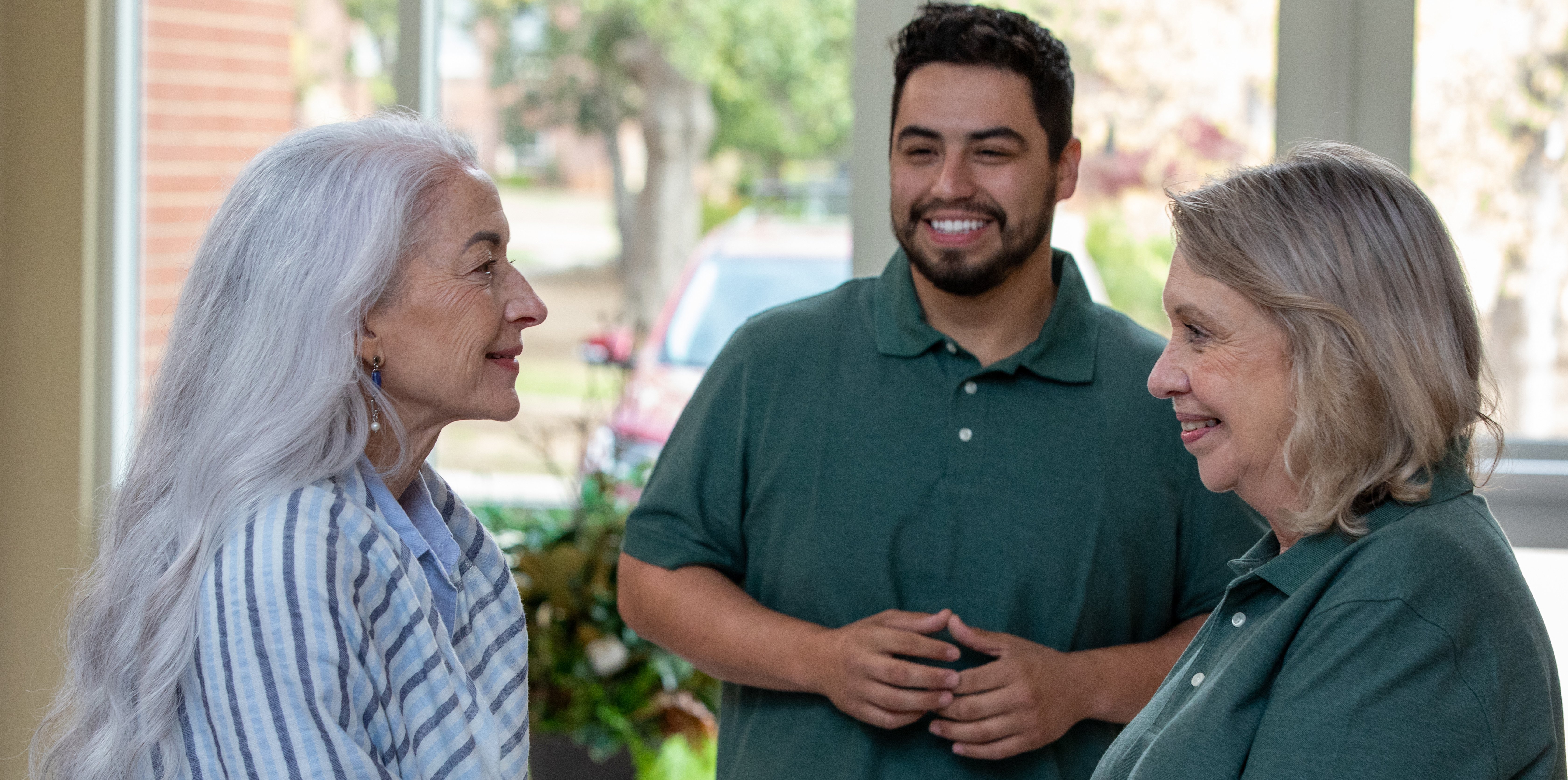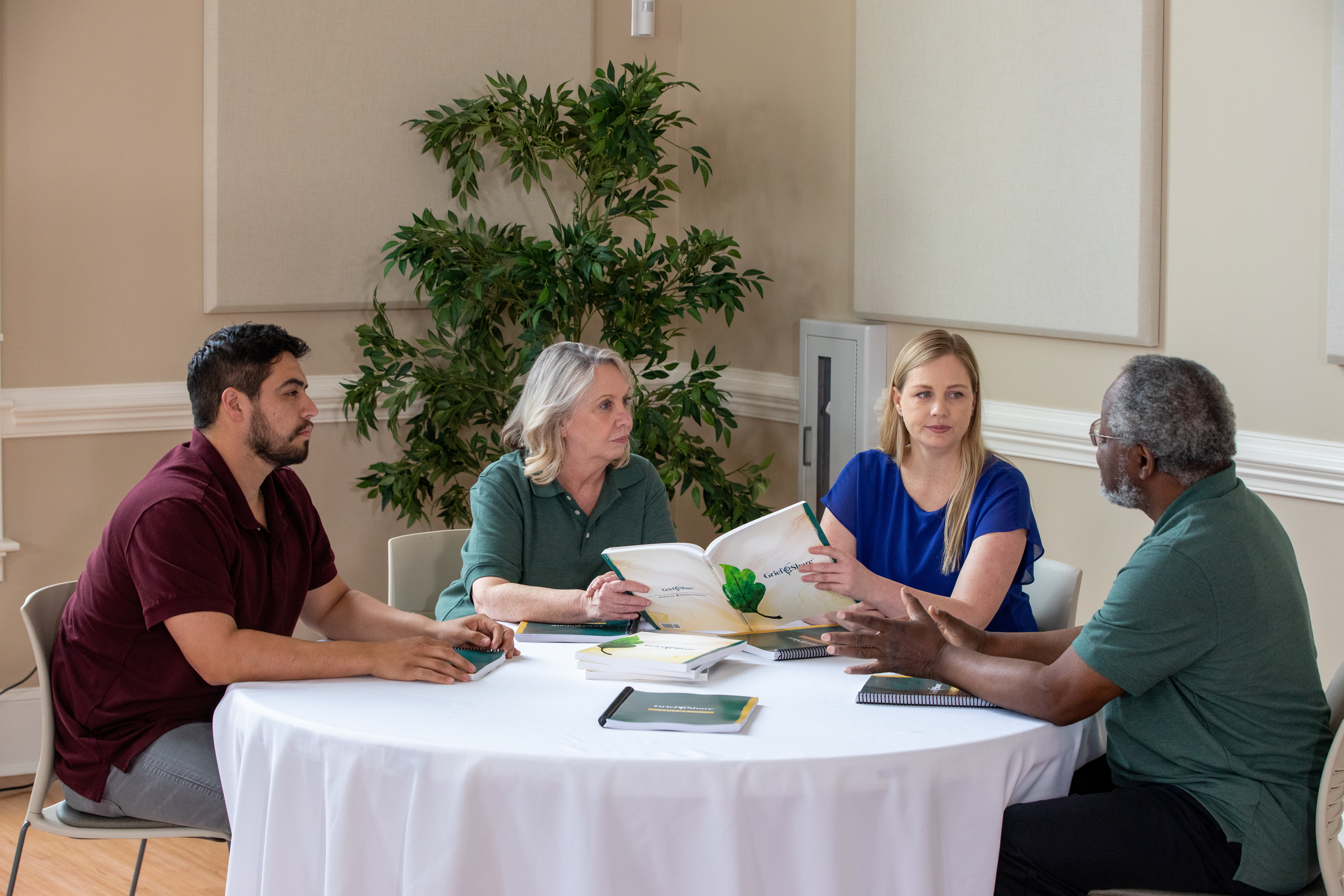Welcoming Newcomers Mid-Cycle

GriefShare groups are designed to provide a safe and supportive environment for individuals navigating the difficult journey of grief. While these groups follow a 13-week structure, it’s not uncommon for new people to join after the initial sessions have begun. As a facilitator, it’s important to create an environment that welcomes latecomers while maintaining the group’s continuity.
Joining a group after it has already started—especially when a person is feeling so vulnerable in grief—is brave. But people are coming to your group because they need it! It is important that a new participant feels welcomed and safe from the moment they walk in.
Here’s how you can effectively integrate new members into your GriefShare group and put them at ease, even after the cycle has started.
1. Be available to give a warm welcome
First impressions are crucial, especially for someone dealing with grief. When a new participant joins mid-cycle, ensure they feel welcomed and valued. Always keep your eyes open for newcomers, then greet them warmly and express your gratitude that they’ve chosen to be part of the group. A personal and immediate welcome from the facilitator (and others on your ministry team) can help alleviate any anxieties they may have about joining late.
Try this:
- Reach out in advance: If possible, reach out to new people before their first session to introduce yourself, provide a brief overview of the group, and answer any questions they might have.
- Have a welcome team: Having designated “greeters” on your ministry team is helpful, so there is always someone available to welcome those who come in the door. See Ministry Team Roles & Responsibilities for ideas on how you can designate volunteers for certain roles, like greeting.
2. Provide context
Latecomers may feel a little lost or disconnected if they’ve missed the earlier sessions. Reassure them that this is an open group and people are welcome to join at any time during the 13-week cycle. Take some time to give them a brief overview of what happens at a group meeting, and some of the topics you’ve covered so far. You could point out previous session topics in their participant guides.
Try this!
- Direct them to MyGriefShare, where they can watch past videos that they missed. (Just make sure they have registered for your group online so that they can access the videos and other helpful resources.) But reassure them that they don’t need to try and catch up.
- Revisit key concepts: During the flow of every session, look for opportunities to naturally incorporate past lessons and insights into the conversation. For instance, you might say, “As we discussed in session 2, finding ways to express your grief is important. How have you been doing with that recently?”
3. Encourage sharing at their own pace
Joining a group in the midst of a cycle can be intimidating, especially in a setting where deep emotions are shared. Encourage newcomers to participate at their own pace. Let them know that it’s okay if they’re not ready to share immediately. Grief is a personal journey, and everyone’s timeline for healing is different. Let them know they will have plenty of opportunities to contribute and their presence alone is valuable to the group.
Try this:
Reassure them: “At GriefShare, no one will be pressured to talk. The decision to share is yours. You will benefit from simply listening to the videos and the discussion. But we encourage you to share when you are ready.”
4. Facilitate connections with other group members
Building connections within the group is key to feeling supported. Encourage existing members to reach out to new participants and make them feel included. As one GriefShare participant shared, “The people [in the group] were so warm and welcoming. I felt safe and not judged. I am looking forward to my next session.”
Try this:
- Assign a buddy: You might consider pairing the newcomer with a group member who has been attending from the start. This “buddy system” can help the new participant feel more connected and provide a point of contact for any questions or concerns they may have.
- Plan a brief time for refreshments at the end of the session where members have the opportunity to interact informally. This can help latecomers bond with others more naturally.
5. Be mindful of group dynamics
The introduction of new members can shift the group’s dynamic. As a facilitator, it’s important to be mindful of how this affects the group as a whole. Participants who have been attending from the start have already begun to process their grief within the context of the group, and it can be difficult when someone new and unknown comes in. This is a legitimate concern, and you’ll want to show understanding and sensitivity not only to the newcomers, but also to your existing group members.
Try this:
- Encourage open communication and remind all participants of the group’s purpose: to support each other through the grieving process.
- Regularly remind the group that this is a place that welcomes newcomers. Offer ideas of how they can support new people. This could be as simple as checking in with them during breaks, offering words of encouragement, or including them in conversations. Remind the group that everyone’s journey is different, and that welcoming new perspectives can enrich the overall experience for everyone.
- Periodically check in with both new and existing members to ensure everyone feels comfortable and that the group dynamic remains positive and supportive. These check-ins can be done in person or through a quick phone call or email during the week. This extra touch can go a long way in helping people feel valued and included.
6. Invite them to the next cycle
While people can join a group at any time, there’s still excellent information that they have missed from previous weeks. Encourage group members to repeat 13-week cycles. Let them know that many participants go through multiple cycles of GriefShare, even up to three times. Each time, participants will hear something new, and they are also at different places in their healing. Repeating GriefShare gives people the opportunity to deepen their understanding and healing, and it gives latecomers the chance to experience the entire program.
Try this:
- Make it easy to register: Plan ahead when your next GriefShare cycle will start, and be sure to Create a Group so it’s listed online. Then, at your final few group sessions, bring a laptop so that people can register for your group on the spot. Or have the web address available and direct people to register on their phones.
- Provide brochures: Pass out brochures with your next group’s dates and times on it. Encourage them to invite a friend or someone they know who is grieving to attend with them.
 Conclusion
Conclusion
Integrating newcomers into a group that has already started forming bonds and progressing through the material can be challenging, but it’s also an opportunity to demonstrate the love, compassion, and care that are the hallmarks of GriefShare.


